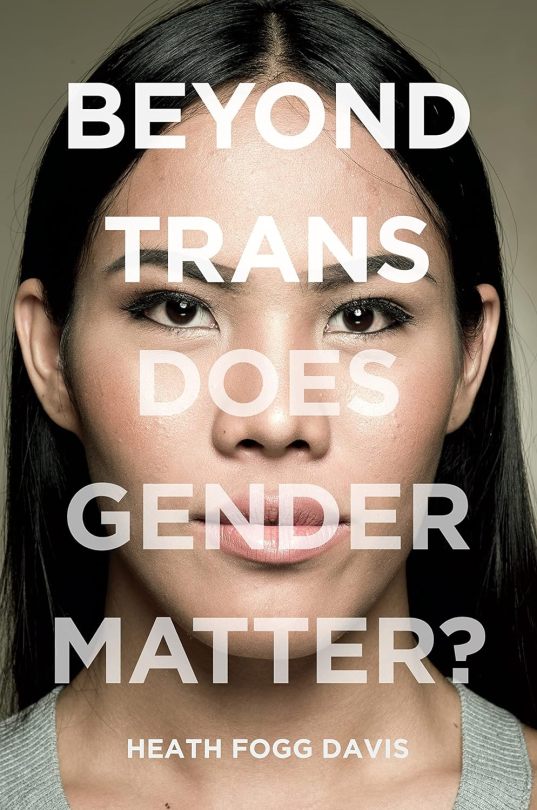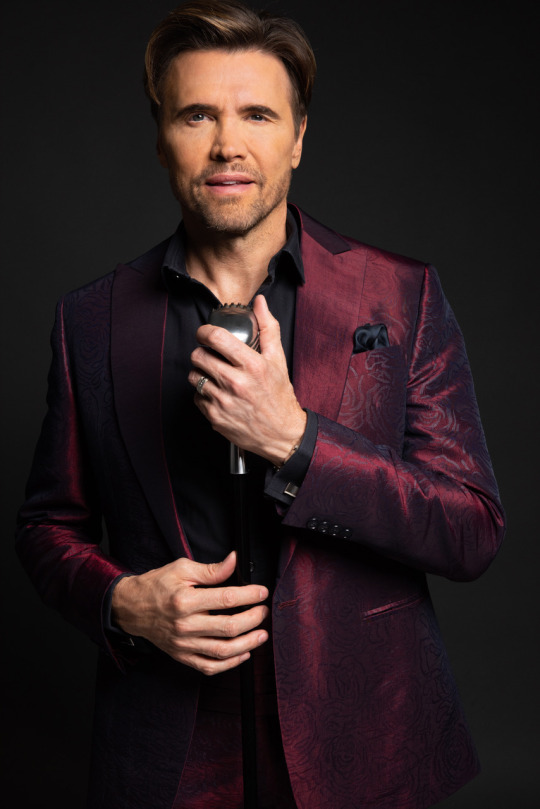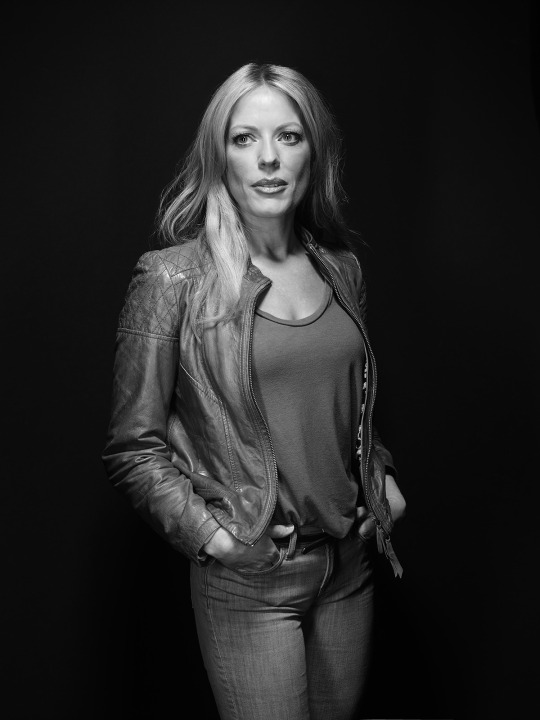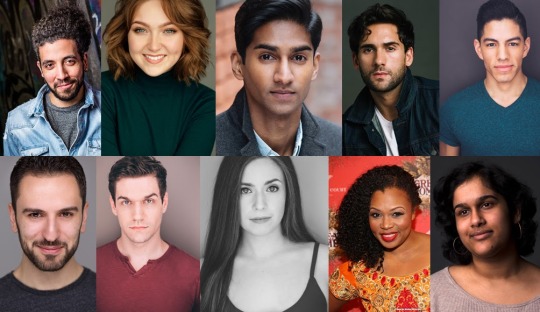#heath fogg
Explore tagged Tumblr posts
Text
Beyond Trans: Does Gender Matter? by Heath Fogg Davis

Goes beyond the category of transgender to question the need for gender classification
Beyond Trans pushes the conversation on gender identity to its limits: questioning the need for gender categories in the first place. Whether on birth certificates or college admissions applications or on bathroom doors, why do we need to mark people and places with sex categories? Do they serve a real purpose or are these places and forms just mechanisms of exclusion? Heath Fogg Davis offers an impassioned call to rethink the usefulness of dividing the world into not just Male and Female categories but even additional categories of Transgender and gender fluid. Davis, himself a transgender man, explores the underlying gender-enforcing policies and customs in American life that have led to transgender bathroom bills, college admissions controversies, and more, arguing that it is necessary for our society to take real steps to challenge the assumption that gender matters.
He examines four areas where we need to re-think our sex-classification systems: sex-marked identity documents such as birth certificates, driver’s licenses and passports; sex-segregated public restrooms; single-sex colleges; and sex-segregated sports. Speaking from his own experience and drawing upon major cases of sex discrimination in the news and in the courts, Davis presents a persuasive case for challenging how individuals are classified according to sex and offers concrete recommendations for alleviating sex identity discrimination and sex-based disadvantage.
For anyone in search of pragmatic ways to make our world more inclusive, Davis’ recommendations provide much-needed practical guidance about how to work through this complex issue. A provocative call to action, Beyond Trans pushes us to think how we can work to make America truly inclusive of all people.
#beyond trans: does gender matter?#heath fogg davis#trans book of the day#trans books#queer books#bookblr#booklr
12 notes
·
View notes
Text
Episode 170 - Gender Theory & Gender Studies
This episode we’re talking about Gender Theory & Gender Studies! We discuss theory vs studies, memes, feminism, books that should exist but don’t, and more!
You can download the podcast directly, find it on Libsyn, or get it through Apple Podcasts, Stitcher, Google Podcasts, or your favourite podcast delivery system.
In this episode
Anna Ferri | Meghan Whyte | Matthew Murray | Jam Edwards
Things We Read (or tried to…)
A Burst of Light by Audre Lorde
Histories of the Transgender Child by Jules Gill-Peterson
Before We Were Trans: A New History of Gender by Kit Heyam
Whipping Girl: A Transsexual Woman on Sexism and the Scapegoating of Femininity by Julia Serano
Queer: A Graphic History by Meg-John Barker and Jules Scheele
Beyond the Gender Binary by Alok Vaid-Menon
A Quick & Easy Guide to Queer & Trans Identities by Mady G. and J.R. Zuckerberg
Other Media We Mentioned
BITCHfest: Ten Years of Cultural Criticism from the Pages of Bitch Magazine edited by Lisa Jervis & Andi Zeisler
Body Outlaws: Rewriting the Rules of Beauty and Body Image edited by Ophira Edut
A Room of One’s Own by Virginia Woolf
Female Masculinity by Jack Halberstam
Whipping Girl: A Transsexual Woman on Sexism and the Scapegoating of Femininity by Julia Serano
Gender Outlaw: On Men, Women and the Rest of Us by Kate Bornstein
The Will to Change: Men, Masculinity, and Love by bell hooks
All the Rage: Mothers, Fathers, and the Myth of Equal Partnership by Darcy Lockman
For Her Own Good: Two Centuries of the Experts' Advice to Women by Barbara Ehrenreich and Deirdre English
The Argonauts by Maggie Nelson
X-Gender, vol. 1 by Asuka Miyazaki
A Quick & Easy Guide to They/Them Pronouns by Archie Bongiovanni and Tristan Jimerson
Feminism is For Everybody by bell hooks
Down Girl: The Logic of Misogyny by Kate Manne
A Girl's Guide to Taking Over the World: Writings From The Girl Zine Revolution edited by Karen Green & Tristan Taormino
Links, Articles, and Things
A small sample of Bibliocommons user-curated lists:
Early Feminism Through 1847
Feminist Classics: Third Wave Feminism, the 1990s
Trans Classics: important books about the many trans experiences
Very Short Introductions (Wikipedia)
TERF / FART / “Gender Critical”
Transgender Childhood Is Not a ‘Trend’ by Jules Gill-Peterson
Gill-Peterson is one of 1,000+ contributors to the New York Times who signed an open letter condemning the anti-trans bigotry in their coverage. Read it here.
Hark! Episode 330: Fucking Pie
20 Gender Theory/Studies books by BIPOC (Black, Indigenous, & People of Colour) Authors
Every month Book Club for Masochists: A Readers’ Advisory Podcasts chooses a genre at random and we read and discuss books from that genre. We also put together book lists for each episode/genre that feature works by BIPOC (Black, Indigenous, & People of Colour) authors. All of the lists can be found here.
Living a Feminist Life by Sara Ahmed
The Sacred Hoop: Recovering the Feminine in American Indian Traditions by Paula Gunn Allen
Borderlands/La Frontera: The New Mestiza by Gloria Anzaldúa
Decolonizing Trans/Gender 101 by b. binaohan
The Crunk Feminist Collection edited by Brittney Cooper, Susana M. Morris, & Robin M. Boylorn
Beyond Trans: Does Gender Matter? by Heath Fogg Davis
Women, Race & Class by Angela Y. Davis
Asegi Stories: Cherokee Queer and Two-Spirit Memory by Qwo-Li Driskill
Radicalizing Her: Why Women Choose Violence by Nimmi Gowrinathan
White Tears/Brown Scars: How White Feminism Betrays Women of Color by Ruby Hamad
Feminist Theory: From Margin to Center by bell hooks
But Some of Us Are Brave: All the Women Are White, All the Blacks Are Men: Black Women's Studies by Akasha Gloria Hull
Indigenous Men and Masculinities: Legacies, Identities, Regeneration edited by Robert Alexander Innes and Kim Anderson
Patriarchy Blues: Reflections on Manhood by Frederick Joseph
Hood Feminism: Notes from the Women That a Movement Forgot by Mikki Kendall
Sister Outsider: Essays and Speeches by Audre Lorde
This Bridge Called My Back: Writings by Radical Women of Color edited by Cherríe Moraga & Gloria Anzaldúa
Colonize This!: Young Women of Color on Today's Feminism edited by Bushra Rehman
I'm Afraid of Men by Vivek Shraya
Black on Both Sides: A Racial History of Trans Identity by C. Riley Snorton
Give us feedback!
Fill out the form to ask for a recommendation or suggest a genre or title for us to read!
Check out our Tumblr, follow us on Twitter or Instagram, join our Facebook Group, or send us an email!
Join us again on Tuesday, March 21st when we’ll be talking about the Moving and Management of Books!
Then, on Tuesday, April 4th we’ll be discussing the genre of Domestic Thrillers!
6 notes
·
View notes
Text
sure thing! It’s a fairly mainstream “trans-inclusive” opinion that while sex is still biological (which is to say, binary, “real,” outside of social opinion, it exists in nature), gender is socially constructed. This frames being transgender as having a socially constructed gender that ‘conflicts with’ biological sex. This conforms to mainstream psychiatric models of transgenderism, which frames trans people as having an identity disorder or something psychologically wrong with us that makes us ‘want to have a gender that is different from our biological sex.’ It is a handy way of conceding that gender is social while still maintaining the belief that sex is a real biological thing. It is very common among doctors, cis allies, policy documents about trans inclusivity (the ones I’ve read, anyway), and is also a common opinion among trans people in my experience.
I really dislike this framing for several reasons - one is that it is in fact arguing that gender is biologically based by tying it to our ‘natural sex’ (if our gender ‘conflicts with’ our sex, then gender is still biologically based, and if the reason you want to change your gender is because of mental illness, then a desire to change one’s gender can only be gained through psychological abnormality). It also maintains sex as something that is real, unchanging, natural, and universal across space, time, and culture. It is none of those things -
sex can change (HRT, surgery, and so on changes our sex, in fact it’s called ‘sex reassignment surgery’ and HRT is comminly understood as initiating a ‘second puberty’),
sex is not binary - a belief that it is binary is what constructs the category of ‘intersex,’ ie people who don’t fit this supposed universal sex binary, and this construction produces medical violence against intersex people by positioning them as medically defective/abnormal,
sex is not ‘real’ in the sense that the category of ‘sex’ is a social construction that bundles a complex series of properties of the body (external genitals, reproductive organs, hormones, chromosomes, gametes, etc) together by claiming they always 100% coincide with each other and form a coherent whole (this is not true, ‘sex’ is a spectrum because sex refers to many, many things). You can read the work of Julia Serano, a trans biologist who has published many open access essays on this subject. I believe she recently published a piece critiquing the idea that gametes are binary
The process of assigning sex at birth does not even follow this supposed scientific fact properly, because we don’t run chromosome checks on infants, we don’t do ultrasounds on them to see what their internal organs look like, we don’t measure their hormone levels, and so on. Sex assignment at birth is a social process of doing a quick genital inspection of infants and then writing down their sex on birth records based on that inspection, and if those external genitals don’t conform to binary understandings of sex (eg the infant is intersex), these genitals are surgically altered to fit this binary model. I believe Adamson describes this in Beyond the Coloniality of Gender as preparing children for a life of ‘good heterosexual sex’ (this is a paraphrase, I don’t remember the exact quote)
Because sex is a socially constructed category, it is not universal, because social constructs are dependent on the social context they arise in. I’ve read a number of papers from postcolonial/decolonial scholars in particular critiquing this supposed universalism as a form of colonial domination (María Lugones’ Coloniality of Gender, Sally Engle Merry’s Colonial and Postcolonial Law, Boris Bertolt’s The Invention of Homophobia in Africa, Jenny Evang’s Is Gender Ideology Western Colonialism?, B Binaohan’s Decolonising Trans/Gender 101. These last two aren’t postcolonial works but they’re very instructive for understanding sex assignment as a deeply oppressive and non-scientific practice: Heath Fogg Davis’ Sex Classification Policies as Transgender Discrimination: An Intersectional Critique and Toby Beauchamp’s Going Stealth: Transgender Politics and US Surveillance Practices)
essentially, “sex is biological, gender is social” is a massive cop-out that still accepts the framing of binary sexual biological legitimacy, which is the foundational belief that produces transphobic violence and discrimination in society. I really like Judith Butler’s framing of it Bodies That Matter: if sex is this supposedly biological reality that can’t change, but our understanding of sex is only always in reference to our social interpretation and application of it in the world (eg gender), then sex is also socially constructed
we never should have let cis people get away with “sex is biological, gender is social”
#even old new york was once new amsterdam#book club#hope that makes sense ! If it doesn’t I can explain more#reading list
12K notes
·
View notes
Text
fourth book for trans rights readathon completed, i listened to the audiobook of Beyond Trans by Heath Fogg Davis and it was. good? it was more gender nihilist 101 than i expected and as such is fully compatible with centrist ideals when i was hoping for something a bit more anarchic based on the premise, and also wasn't very academically rigorous but given it's meant to introduce gender abolition that loves and embraces trans people to a general audience, it fulfills its job. at times the book veers a little into strongly into not questioning the sex binary that it detracted from the message, which is a recurring issue i've been having with trans nonfiction lately-- where has all the sex nihilism gone!!!
0 notes
Photo

L O N D O N pt.2 A Visual Diary 📔 Here & There: 📍Hampstead Heath 📍Mr. Fogg's Tavern 📍Primrose Hill 📍The Shard 📍The London Eye 📍Walkie Talkie Building 📍POV Double Decker Bus Hi, I am Matt. I am currently living and traveling in Europe for the foreseeable future. 🧳 Hit that Follow Button to be Inspired Weekly with the Best Travel Content. 😊 Smash that Share Button to Inspire others. 🤟🏻 #visitlondon #travellondon #londontourism #londongram (at London, United Kingdom) https://www.instagram.com/p/CoFBsHUogeO/?igshid=NGJjMDIxMWI=
0 notes
Video
youtube
Gimme All Your Love by Alabama Shakes from the album Sound & Color - Contest winner music video directed by Clayton McCracken (runner up video here)
#music#alabama shakes#zac cockrell#steve johnson#steven william johnson#brittany howard#heath fogg#ben tanner#shawn everett#blake mills#video#music video#clayton mccracken#andy koeger#dan frantz#mikey pehanich#bobby hanley#cody samson#slot machine
25 notes
·
View notes
Text
Ok but they're not wrong? Gendered bathrooms became a thing because before women joined the workforce it was assumed only men would use restrooms. Then when women started joining the workforce, rich women demanded separate restrooms so they wouldn't mingle with men and "uncouth" (read: poor) women. And who's running scare campaigns about women being "assaulted by men" in bathrooms? Rich white women.
Sources: Beyond Trans: Does Gender Matter? by Heath Fogg Davis, Gender: A Graphic Guide by Meg-John Barker & Julia Scheele

#i know this was supposed to be a joke post#but it's true#not the full story but true#bathrooms#lgbtq
3K notes
·
View notes
Video
youtube
Gimme All Your Love by Alabama Shakes from the album Sound & Color - Directed by Larry Ismail & Marie-Laure Blancho
#music#alabama shakes#brittany howard#heath fogg#zac cockrell#steve johnson#blake mills#video#music video#marie laure blancho#larry ismail#paul combaluzier#piere warolin#mildred moya#pierre porquet#marie françoise pigot#marie francoise pigot#claire beaugé#claire beauge
7 notes
·
View notes
Video
youtube
Alabama Shakes - Don't Wanna Fight
#Alabama Shakes#Don't Wanna Fight#Musique#Sound & Color#2015#Rock#Alternative#Brittany Howard#Heath Fogg#Zac Cockrell#Steve Johnson
2 notes
·
View notes
Text
Six months of reading (arranged in order of date completed):
January:
01-05 Zeyn Joukhadar, The Thirty Names of Night
01-09 Layne Redmond, When the Drummers Were Women: A Spiritual History of Rhythm
01-17 Jennifer Zeynab Joukhadar, The Map of Salt and Stars
01-21 Mickey Hart with Jay Stevens, Drumming at the Edge of Magic: A Journey into the Spirit of Percussion
01-24 Ian Rankin, A Song for the Dark Times
01-27 Aravind Adiga, Amnesty
February:
02-01 Kate Bornstein, Gender Outlaw: On Men, Women, and the Rest of Us (2nd Ed)
02-06 John le Carré [David John Moore Cornwell], The Little Drummer Girl
02-08 Mickey Hart and Fredric Lieberman, Planet Drum: A Celebration of Percussion and Rhythm
02-10 Michael Connelly, The Law of Innocence
02-16 Janet Mock, Redefining Realness: My Path to Womanhood, Identity, Love & So Much More
02-20 Heather McHugh, Muddy Matterhorn
02-22 John Connolly, Every Dead Thing
02-24 Algernon Charles Swinburne, Love's Cross-Currents: A Year's Letters
02-25 Chuck Klosterman, I Wear the Black Hat: Grappling with Villains (Real and Imagined)
March:
03-01 Robert Jones, Jr., The Prophets
03-04 Jessica Bruder, Nomadland: Surviving America in the Twenty-First Century
03-12 Viet Thanh Nguyen, The Sympathizer
03-19 Sasha Geffen, Glitter Up the Dark: How Pop Music Broke the Binary
03-22 John Connolly, The Dirty South
03-25 Viet Thanh Nguyen, The Committed
03-29 Remy Boydell [art] and Michelle Perez [words], The Pervert
03-30 Willa Cather, My Ántonia
April:
04-03 Charles Brockden Brown, Wieland
04-06 S. A. Cosby, Blacktop Wasteland
04-08 Willa Cather, Death Comes for the Archbishop
04-16 Rachel Kushner, The Flamethrowers
04-24 Willa Cather, One of Ours
04-26 Paisley Rekdal, Appropriate: A Provocation
May:
05-05 Dawnie Walton, The Final Revival of Opal & Nev: A Novel
05-08 Willa Cather, O Pioneers!
05-12 Stephen King, The Institute
05-18 Nathaniel Hawthorne, The Blithedale Romance
05-22 Elizabeth Siddall, My Ladys Soul: The Poems of Elizabeth Eleanor Siddall
June:
06-08 Ann Patchett, Taft
06-11 Jessica Barry [Melissa Pimentel], Don't Turn Around
06-14 Rachilde [Marguerite Vallette-Eymery], Monsieur Vénus: A Materialist Novel
06-21 Carole Johnstone, Mirrorland
06-24 Heath Fogg Davis, Beyond Trans: Does Gender Matter?
06-28 Karen Kondazian, The Whip
45 notes
·
View notes
Photo

Elevata, Row 1, column 1, Maria Magdalena Campos-Pons, 2002, Harvard Art Museums: Photographs
Harvard Art Museums/Fogg Museum, Purchase through the generosity of Susan H. Edwards; Dorothy Heath; Saundra Lane; Richard and Ronay Menschel Fund for the Acquisition of Photographs; The Widgeon Point Charitable Foundation; Melvin R. Seiden; Dr. Daniel... © Maria M. Campos-Pons Size: sheet: 66.7 × 55.9 cm (26 1/4 × 22 in.) mount: 71.1 × 62.5 cm (28 × 24 5/8 in.) Medium: 1 of 16 Polacolor #6 24-by-20 Polaroid prints
https://www.harvardartmuseums.org/collections/object/339583
11 notes
·
View notes
Photo

Medmenham Abbey, Butterworth and Heath, 19th century, Harvard Art Museums: Prints
Harvard Art Museums/Fogg Museum, Gift of Belinda L. Randall from the collection of John Witt Randall
https://www.harvardartmuseums.org/collections/object/245684
6 notes
·
View notes
Text
20 Gender Theory/Gender Studies books by BIPOC (Black, Indigenous, & People of Colour) Authors
Every month Book Club for Masochists: A Readers’ Advisory Podcasts chooses a genre at random and we read and discuss books from that genre. We also put together book lists for each episode/genre that feature works by BIPOC (Black, Indigenous, & People of Colour) authors. All of the lists can be found here.
Living a Feminist Life by Sara Ahmed
The Sacred Hoop: Recovering the Feminine in American Indian Traditions by Paula Gunn Allen
Borderlands/La Frontera: The New Mestiza by Gloria Anzaldúa
Decolonizing Trans/Gender 101 by b. binaohan
The Crunk Feminist Collection edited by Brittney Cooper, Susana M. Morris, & Robin M. Boylorn
Beyond Trans: Does Gender Matter? by Heath Fogg Davis
Women, Race & Class by Angela Y. Davis
Asegi Stories: Cherokee Queer and Two-Spirit Memory by Qwo-Li Driskill
Radicalizing Her: Why Women Choose Violence by Nimmi Gowrinathan
White Tears/Brown Scars: How White Feminism Betrays Women of Color by Ruby Hamad
Feminist Theory: From Margin to Center by bell hooks
But Some of Us Are Brave: All the Women Are White, All the Blacks Are Men: Black Women's Studies by Akasha Gloria Hull
Indigenous Men and Masculinities: Legacies, Identities, Regeneration edited by Robert Alexander Innes and Kim Anderson
Patriarchy Blues: Reflections on Manhood by Frederick Joseph
Hood Feminism: Notes from the Women That a Movement Forgot by Mikki Kendall
Sister Outsider: Essays and Speeches by Audre Lorde
This Bridge Called My Back: Writings by Radical Women of Color edited by Cherríe Moraga & Gloria Anzaldúa
Colonize This!: Young Women of Color on Today's Feminism edited by Bushra Rehman
I'm Afraid of Men by Vivek Shraya
Black on Both Sides: A Racial History of Trans Identity by C. Riley Snorton
0 notes
Photo

Untitled, Greg Parker, 2000, Harvard Art Museums: Drawings
Harvard Art Museums/Fogg Museum, Gift of Milan A. Heath, Jr. '59 and Dorothy A. Heath in honor of Marjorie B. Cohn © Greg Parker Size: 43.2 x 30.4 cm (17 x 11 15/16 in.) Medium: Dry pigment, medium, and gesso on cream wove paper
https://www.harvardartmuseums.org/collections/object/318661
4 notes
·
View notes
Text
y’all want an artist reccomendation?
(excuse any spelling mistakes i Do Not posess a braincell today)
welcome to avimie’s artist recommendations!!
This weeks singer/songwriter/band; Alabama Shakes!
Alabama Shakes is an American blues rock band formed in Athens, Alabama in 2009. The band currently consists of lead singer and guitarist Brittany Howard, guitarist Heath Fogg, bassist Zac Cockrell, and drummer Steve Johnson. The group rose to prominence in the early 2010s and have sold over 1.5 million albums in the US.
The band began its career touring and performing at bars and clubs around the Southeast for two years while honing their sound and writing music. They recorded their debut album Boys & Girls with producer Andrija Tokic in Nashville while still unsigned. Online acclaim led ATO Records to sign the band, which released Boys & Girls in 2012 to critical success. The album’s hit single "Hold On" was nominated for three Grammy Awards. After a long touring cycle, the band recorded its second record Sound & Color, which was released in 2015 and debuted at number one on the Billboard 200, and won four Grammy Awards. (Source; Wikipedia)
songs that i reccomend of theirs;
Alabama Shakes - Future People
Alabama Shakes - Hold On
Alabama Shakes - Don’t Wanna Fight
Alabama Shakes - Gimme All Your Love (Live on SNL)
Alabama Shakes - Over My Head
i hope y’all find this useful if you want!!
#alabama shakes#blues rock#alabama#brittany howard#health fogg#zac cockrell#steven johnson#music reviews
3 notes
·
View notes
Photo









Casting Goals: Sweeney Todd
Continuing with spooky doopy month we have Sweeney Todd!
Brent Barrett as Sweeney Todd
Sherie Rene Scott as Mrs. Lovett
Jordan Donica as Anthony Hope
Ali Ewoldt as Johanna Barker
Jon Jon Briones as Judge Turpin
Ethan Slater as Tobias Ragg
Raúl Esparza as Beadle Bamford
Amber Gray as Beggar Woman (Lovett u/s)
Lucas Steele as Adolfo Pirelli
Adam Kaokept as Ensemble
Benjamin Yates as Ensemble (Tobias u/s)
Brian Rivera as Ensemble (Beadle u/s)
Charlotte Mary Wen as Ensemble
Dorcas Leung as Ensemble (Johanna u/s)
Ellen Harvey as Ensemble (Lovett u/s, Beggar Woman u/s)
Erik Martenson as Ensemble (Anthony u/s)
Eymard Cabling as Ensemble (Turpin u/s)
Gabriella Sorrentino as Ensemble
Heath Saunders as Jonas Fogg/Ensemble (Todd u/s, Beadle u/s)
Lydia Gerrard as Ensemble (Johanna u/s)
Michael Maliakel as Ensemble (Anthony u/s, Pirelli u/s)
Milo Alosi as Ensemble
Pedro Garza as Ensemble (Tobias u/s)
Pomme Koch as Ensemble (Pirelli u/s)
Ryan Vasquez as Ensemble (Todd u/s, Turpin u/s)
Sarah Anne Fernandez as Ensemble
Sumayya Ali as Ensemble
Sushma Saha as Ensemble (Beggar Woman u/s)
Adam Ali-Perez as Swing
Armando Eleazar as Swing
Bligh Voth as Swing
Brandt Martinez as Swing
Karmine Alers as Swing
Honorable Mentions: Ezra Menas as Ensemble (Tobias u/s) Jarrod Spector as Adolfo Pirelli Jin Ha as Adolfo Pirelli Joan Almedilla as Mrs. Lovett Kaley Ann Voorhees as Johanna Barker Rodney Ingram as Anthony Hope Will Swenson as Judge Turpin
#Casting Goals#Sweeney Todd#Brent Barrett#Sherie Rene Scott#Jordan Donica#Ali Ewoldt#Jon Jon Briones#Ethan Slater#Raúl Esparza#Amber Gray#Lucas Steele#Adam Kaokept#Benjamin Yates#Brian Rivera#Charlotte Mary Wen#Dorcas Leung#Ellen Harvey#Erik Martenson#Eymard Cabling#Gabriella Sorrentino#Heath Saunders#Lydia Gerrard#Michael Maliakel#Milo Alosi#Pedro Garza#Pomme Koch#Ryan Vasquez#Sarah Anne Fernandez#Sumayya Ali#Sushma Saha
5 notes
·
View notes